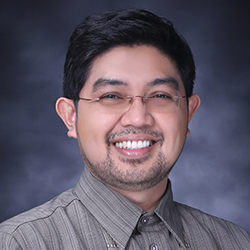

When Duterte spoke about the tambays two weeks ago, he made history for being the first Filipino president to use the concept of “istambay” as a national issue (or tambay, as commonly used).
This was a big surprise for me because as my years of research suggests, the tambay phenomenon is one cultural fabric of Filipino social life that is often taken for granted. But because it has evolved to mean lots of things to many Filipinos, to use the tambay concept loosely only perpetuates stereotypes and hides what is deeply “social” about this phenomenon.
Tambay is a complex word. It could refer to people “waiting” in street corners, hanging out or loitering. But it could also refer to the purpose of the action, “waithood,” which could mean any intent of waiting or standing by.
This may be the reason why many of us are confused with the misconstrued anti-tambay campaign now being used to enforce old projects like Oplan RODY (Rid the Streets of Drunkards and Youth) apparently backed up by local ordinances around the country.
The crux of the matter is, there is no national policy that criminalizes tambays.
It is Duterte’s spontaneous directive before a group of enforcers in Malacañang last June 13, 2018 that created both criminal tambays and tambay criminals. No one really knows what exactly the President means when he linked crimes with tambays and when he connected the act of “waiting” (pag mag istambay-istambay) with committing crimes. With his usual authoritative mode, he threatened the istambays to go home, if not, he will take care of them by tying-up their hands and throwing them somewhere in Pasig.
“…Ang mga kriminal dapat dyan, ang mga durugista dapat dyan, they are not supposed to be there. My directive is pag mag istambay-istambay…umuwi kayo. ‘Pag hindi kayo umuwi ipahatid ko kayo sa opisina nun…sa Pasig. Ako nang bahala, ilagay mo lang yan. Talian ng kamay pati..ihulog ko yan dyan…”
Oversimplied problem
At first glance, this directive may sound like “good” for preventing crimes and promoting public order.
But Duterte seems to have miscalculated and oversimplified the connection of crimes (such as drug abuse or addiction, public misdemeanor) with the act of waiting, “waithood” (pag istambay) and the place where waiting occurs.
A gamut of disturbing questions need to be asked: Which tambay crimes are we supposed to be worrying about? Who or what type of istambays is Duterte referring to? What istambay places are to be zoned-in and out for inspection? By getting rid of what Duterte refers to as “tambays”, do we expect less crimes and more public order? What will our common streets be like without these tambays? And so, ultimately, we must ask again, whose tambays are we really referring to here? And what public spaces are we protecting from these criminal tambays?
I say Mr. President, with all due respect, the tambays you have referred to in your directive are the most vulnerable ones.
These are the poor and marginalized from both rural and urban areas; the males who are more likely to be unemployed; and the most painful to me, the young Filipinos, who make up two-thirds of the unemployed ranging from 15-34 years old.
Campaign promise
There is a higher likelihood that the vulnerable poor young Filipino males would be the ones rounded and wounded-up, inspected, and arrested due to this tambay directive.
What happened to your campaign promise that you will protect the youth of this country even if you lose your life and the presidency?
I do not think using the stereotypical portrayal of tambays as a platform to solve petty crimes to gain public order resolves what may be socially gained from understanding the istambay phenomenon.
Empirically, to say that we want to get rid of this country tambays is tantamount to saying getting rid of the millions of young Filipinos whose access to education and employment is limited and wanting.
The tambays can be our government’s target for social reform. But this should not be the police nor the military being directed to apprehend them.
It should be through the combined efforts and resources of various government agencies such as the Department of Social Welfare and Development, Department of Education (DepEd), the Commission on Higher Education, the Technical Education and Skills Development Authority, and the Department of Labor and Employment, where our government can develop human capital-intensive programs that will empower these istambays to be productive.
I think if the President is serious in helping the tambays reach their full potential, he will immediately stop the implementation of Oplan RODY (Rid the Streets of Drunkards and Youth), whose insistence to use his name’s acronym reflect what is most wrong in having a project that symbolically institutionalize getting “rid of youth” as part of its campaign title.
Instead, if the President really feels that this tambay problem is urgent for resolution, then he could create inter-agency program that may study carefully how istambay status among young Filipinos may be reversed.
I would not be surprised if this program will point to the more salient structural socio-economic factors shaping the istambay phenomenon rather than the mere personal-individualized stereotypical view that the President’s directive led us into thinking. – Rappler.com
Clarence M. Batan, PhD, (cmbatan@ust.edu.ph ) is a youth sociologist, professor, and former research director at the University of Santo Tomas. He is president of the Philippine Sociological Society. He has been studying the Filipino istambay phenomenon since 2005 and has published a series of research articles about this topic.